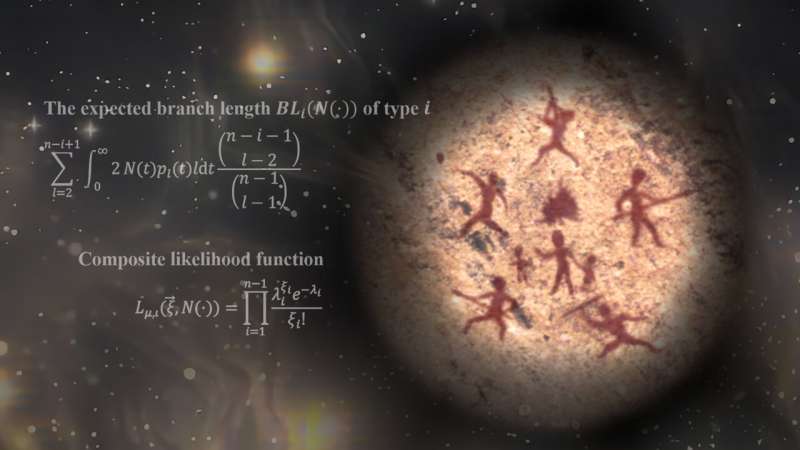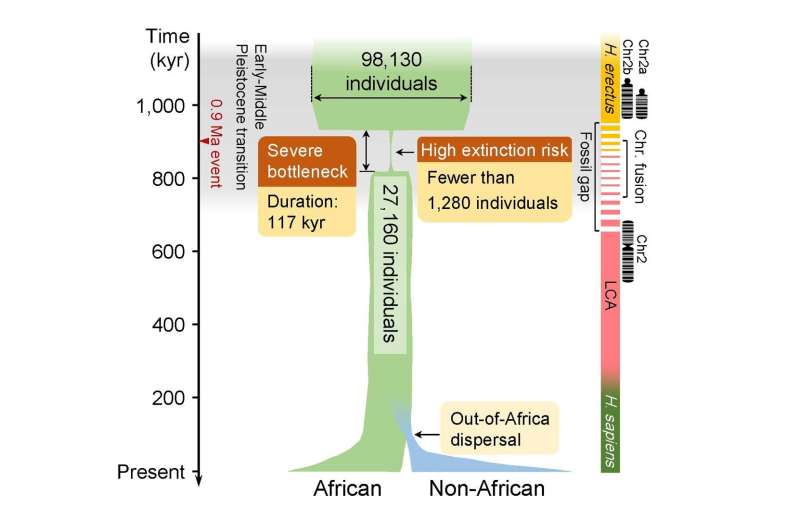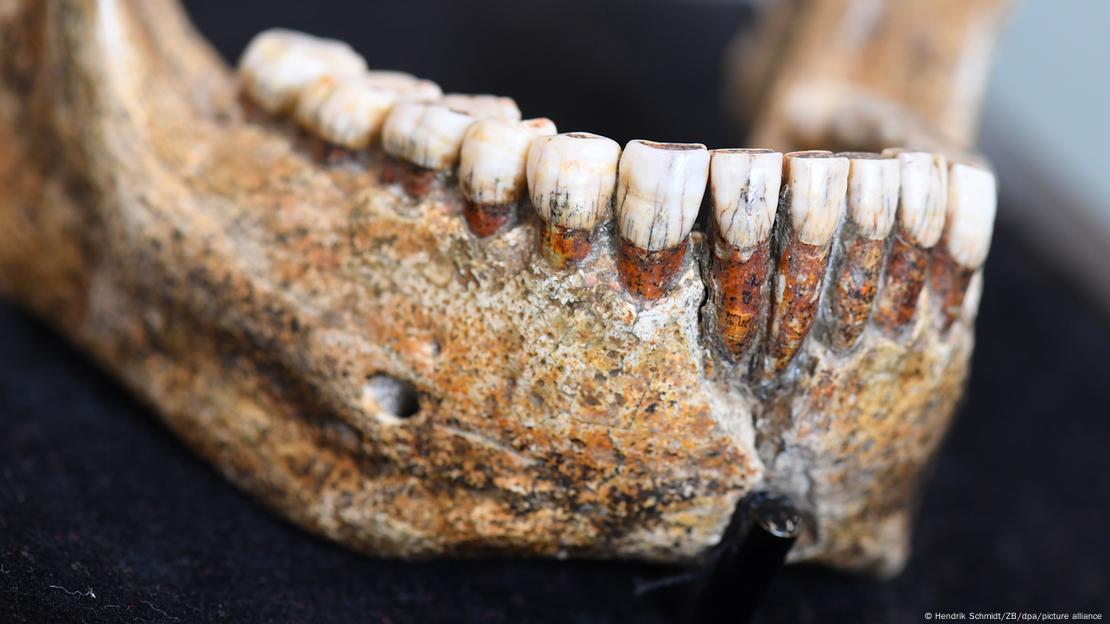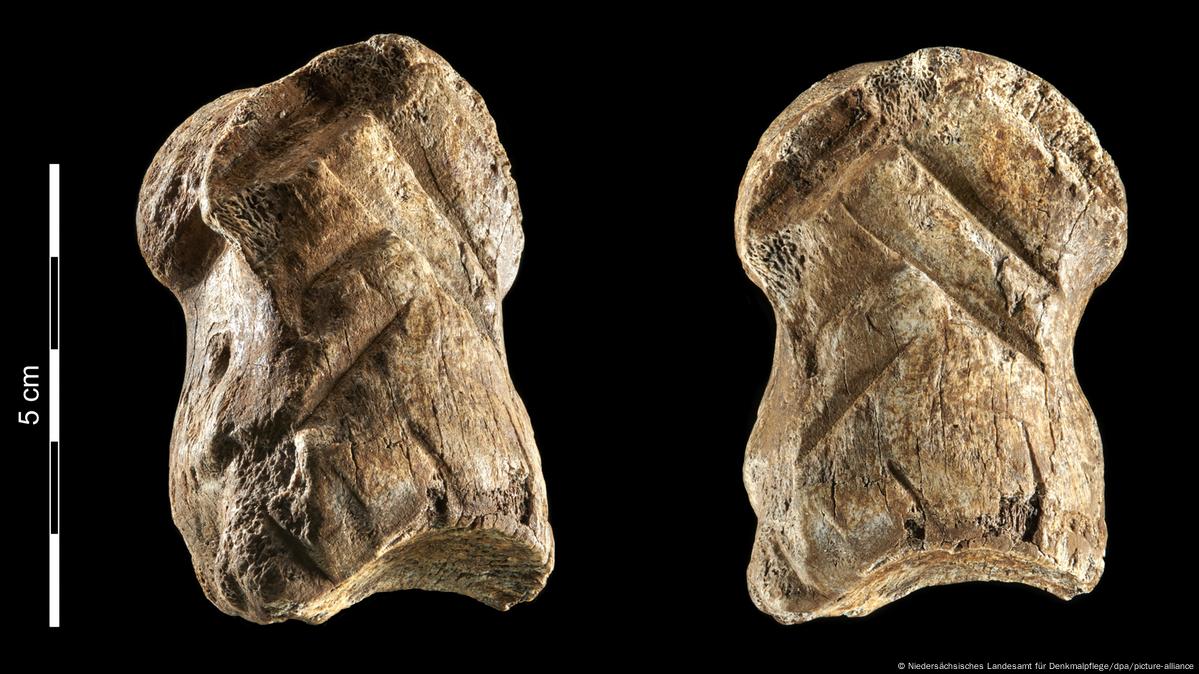Early ancestral bottleneck could've spelled the end for modern humans
"The fact that we are here today, populating this planet with over 8 billion individuals, means that we managed to survive myriad unfavorable events thanks to our adaptive abilities and, why not, a touch of luck," said Giorgio Manzi, professor of anthropology at Sapienza University of Rome. Manzi collaborated on the research.
Early ancestral bottleneck could've spelled the end for modern humans

How a new method of inferring ancient population size revealed a severe bottleneck in the human population which almost wiped out the chance for humanity as we know it today.
An unexplained gap in the African/Eurasian fossil record may now be explained thanks to a team of researchers from China, Italy and the United States.
Using a novel method called FitCoal (fast infinitesimal time coalescent process), the researchers were able to accurately determine demographic inferences by using modern-day human genomic sequences from 3,154 individuals. Researchers published their findings online in the journal Science.
These findings indicate that early human ancestors went through a prolonged, severe bottleneck in which approximately 1,280 breeding individuals were able to sustain a population for about 117,000 years. While this research has illuminated some aspects of early to middle Pleistocene ancestors, there are many more questions to be answered since uncovering this information.
A large amount of genomic sequences were analyzed in this study. However, "the fact that FitCoal can detect the ancient severe bottleneck with even a few sequences represents a breakthrough," says senior author Yun-Xin Fu, a theoretical population geneticist at University of Texas Health Science Center at Houston.
The results determined using FitCoal to calculate the likelihood for present-day genome sequences found that early human ancestors experienced extreme loss of life and therefore, loss of genetic diversity.
"The gap in the African and Eurasian fossil records can be explained by this bottleneck in the Early Stone Age as chronologically. It coincides with this proposed time period of significant loss of fossil evidence," says senior author Giorgio Manzi, an anthropologist at Sapienza University of Rome.
Reasons suggested for this downturn in human ancestral population are mostly climatic: glaciation events around this time lead to changes in temperatures, severe droughts, and loss of other species, potentially used as food sources for ancestral humans.

An estimated 65.85% of current genetic diversity may have been lost due to this bottleneck in the early to middle Pleistocene era, and the prolonged period of minimal numbers of breeding individuals threatened humanity as we know it today.
However, this bottleneck seems to have contributed to a speciation event where two ancestral chromosomes may have converged to form what is currently known as chromosome 2 in modern humans. With this information, the last common ancestor has potentially been uncovered for the Denisovans, Neanderthals, and modern humans (Homo sapiens).
We all know that once a question is answered, more questions arise.
"The novel finding opens a new field in human evolution because it evokes many questions, such as the places where these individuals lived, how they overcame the catastrophic climate changes, and whether natural selection during the bottleneck has accelerated the evolution of human brain," says senior author Yi-Hsuan Pan, an evolutionary and functional genomics at East China Normal University (ECNU).
Now that there is reason to believe an ancestral struggle occurred between 930,000 and 813,000 years ago, researchers can continue digging to find answers to these questions and reveal how such a small population persisted in assumably tricky and dangerous conditions. The control of fire, as well as the climate shifting to be more hospitable for human life, could have contributed to a later rapid population increase around 813,000 years ago.
"These findings are just the start. Future goals with this knowledge aim to paint a more complete picture of human evolution during this Early to Middle Pleistocene transition period, which will in turn continue to unravel the mystery that is early human ancestry and evolution," says senior author LI Haipeng, a theoretical population geneticist and computational biologist at Shanghai Institute of Nutrition and Health, Chinese Academy of Sciences (SINH-CAS).
This research was jointly led by Li Haipeng at SINH-CAS and Yi-Hsuan Pan at ECNU. Their collaborators, Fabio Di Vincenzo at the University of Florence, Giogio Manzi at Sapienza University of Rome, and Yun-Xin Fu at the University of Texas Health Science Center at Houston, have made important contribution to the findings.
The research was first-authored by Hu Wangjie and Hao Ziqian who used to be students/interns at SINH-CAS and ECNU. They are currently affiliated with Icahn School of Medicine at Mount Sinai, and Shandong First Medical University & Shandong Academy of Medical Sciences, respectively. Du Pengyuan at SINH-CAS, and Cui Jialong at ECNU also contributed to this research.
More information: Wangjie Hu et al, Genomic inference of a severe human bottleneck during the Early to Middle Pleistocene transition, Science (2023). DOI: 10.1126/science.abq7487. www.science.org/doi/10.1126/science.abq7487
Citation: Early ancestral bottleneck could've spelled the end for modern humans (2023, August 31) retrieved 31 August 2023 from https://phys.org/news/2023-08-early-ancestral-bottleneck-couldve-modern.html
This document is subject to copyright. Apart from any fair dealing for the purpose of private study or research, no part may be reproduced without the written permission. The content is provided for information purposes only.
Imagine it's 900,000 years ago and you're wandering naked in the beautiful harshness of nature. It's getting colder and drier, food is scarce and almost everyone around you is dying. Your own survival hangs in the balance.
If that feels far from reality, it couldn't have been more real for your great-great-great... times 30,000.... grandparents.
on August 31 says our ancestors, then living in Africa, were on the brink of extinction.
There was a sudden reduction in the population, leaving only about 1,280 early humans. What caused the near full extinction is unclear, but it may well have been a form of climate change, similar to what we're experiencing today.
Most died, some survived, and then we came
The fate of humanity was literally in the hands of a few, and all our history, our loved ones and everyone we know comes from those very few lucky survivors. They managed to keep the population afloat for about 117,000 years, the study authors found.
"The fact that we are here today, populating this planet with over 8 billion individuals, means that we managed to survive myriad unfavorable events thanks to our adaptive abilities and, why not, a touch of luck," said Giorgio Manzi, professor of anthropology at Sapienza University of Rome. Manzi collaborated on the research.

A bottleneck event is when a large number of living things get squeezed by a natural event — like the name suggests, much like the thin neck of a bottle — and then a lucky few come out of the opening and spread out again.
A gap in the human fossil record
Science has taught us a lot about our origins, mostly through fossils.
It's generally accepted that about 700,000 to 500,000 years ago Neanderthals, Denisovans and an ancient version of us split from a common ancestor. That common ancestor may have been what scientists call, Homo heidelbergensis, and this new study appears to support that theory.
But there's a gap in the fossil records. There's very little fossil evidence from about 900,000 years ago, and that has puzzled scientists for decades.
This new study, however, presents a possible reason for the fewer fossils. It could be that between 930,000 and 813,000 years ago around 98.5% of those early humans died out.
If there were fewer individuals, it makes sense that fewer of them would have been fossilized — hence the reduction in fossil evidence.
Were Neanderthals more artistic than previously thought?
A carved prehistoric bone provides new insight into the Neanderthals' culture. We take a look at the famous fossils that shed light on our ancestors and their creative pursuits.
Image: Niedersächsisches Landesamt für Denkmalpflege/dpa/picture-alliance

Did a changing climate lead to their extinction?
The researchers said their findings strongly correlate with a "dramatic" climate change event that occurred about 1 million years ago.
The event, known as the Transition of the Lower and Middle Pleistocene, was a turning point for many living things.
"Our discovery draws attention to how climate changes have influenced our evolution," said Manzi, who also drew attention to how current human-caused climate change "could once again lead us to the brink of extinction."
It could have been a severe glaciation event, when ice spreads from the Earth's poles, severe droughts and the loss of other species, such as those that our ancestors may have eaten.
Sound familiar? We're seeing similar events today, the only difference being that the polar ice is melting, not spreading.
Looking into our past through human genes
The researchers analyzed the genome sequences of more than 3,000 modern humans, using a new statistical method called FitCoal.
FitCoal looks back in time through genetic material to gain an understanding about previous populations.
The findings still need to be tested against existing fossil and archaeological records. For instance, the researchers would like to find out whether those 1,280 survivors were indeed the ancestors of Neanderthals, Denisovans and modern humans.
And with FitCoal, all they need is a little genetic information.
Edited by: Zulfikar Abbany


No comments:
Post a Comment